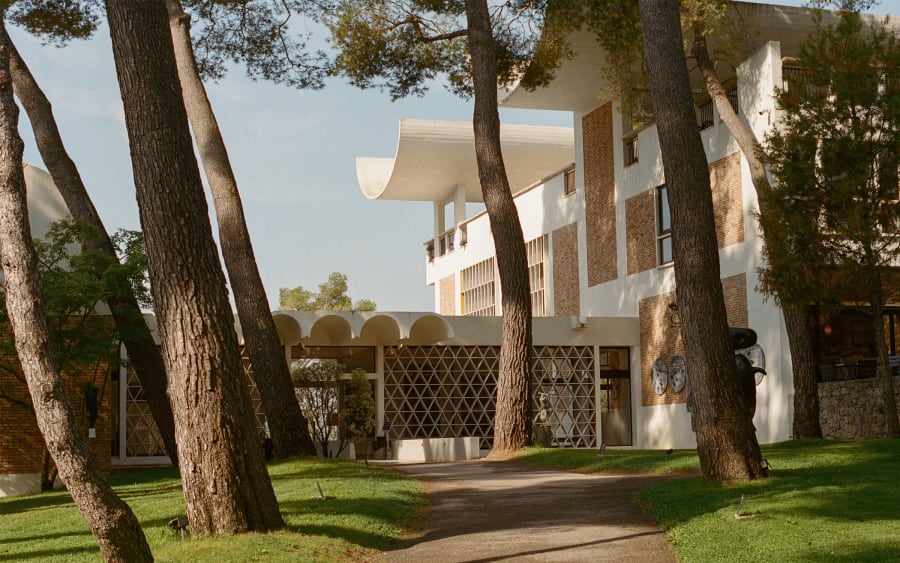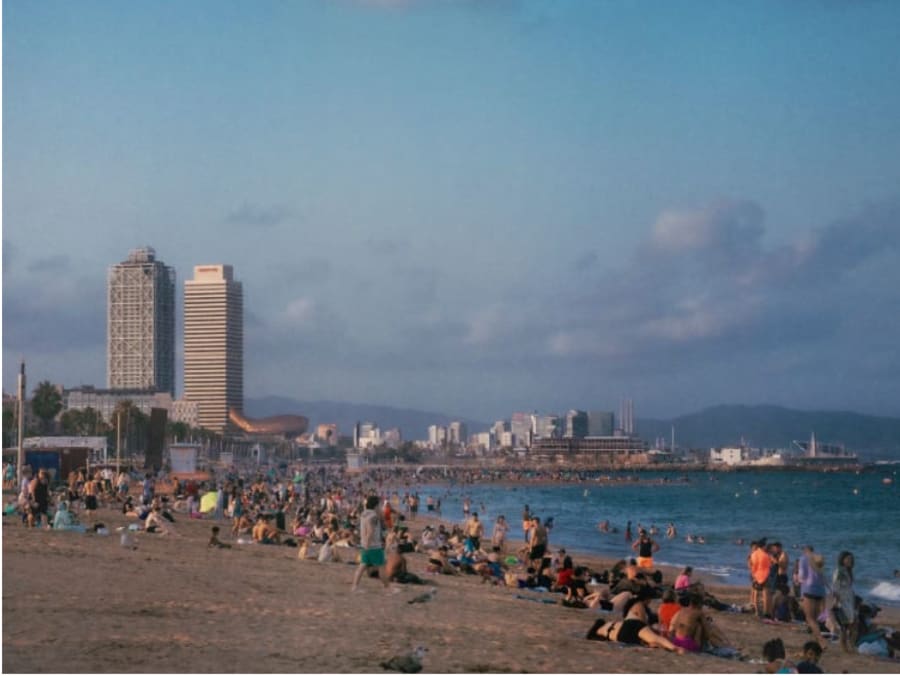The Piedmont region of Italy is renowned for its cultural heritage, its gastronomy, and its industrial past. This year, the roving ‘Panorama’ exhibition, staged by ITALICS, an association of over 70 leading Italian art galleries, takes place across four small hilltop towns in the rolling Piedmontese countryside. Curated by the art historian Carlo Falciani, the exhibition unites contemporary artists including Binta Diaw, Maria Nepomuceno, Theaster Gates, and Alex Katz with Mannerist painters, 18th-century weapon makers, and 14th-century sculptors. Venues range from a castle in Montemagno, to a former orphanage and psychiatric hospital in Camagna, to churches and private residences. Falciani aimed to create ‘a Renaissance voyage for the visitors’; a journey of discovery where there is a clear dialogue between the historic venues and the mainly contemporary artworks.
Falciani drew inspiration from the La Civil Conversazione (1574), a text by 16th-century writer and diplomat Stefano Guazzo. For Falciani, the exchanges of philosophical and ethical viewpoints that characterize the dialogues in Guazzo’s text, contain ‘fertile ideas that are still capable of germinating today.’
The exhibition is structured around four main sites in the villages of Camagna, Vignale, Montemagno, and Castagnole, each focused around a specific theme: ‘Work and Roots’, ‘Portrait and Identity’, ‘Transience and Death’, and ‘Sacredness of Art’.
In Camagna, vines have penetrated the window frames of a former orphanage, green shoots snaking into the cellar, reflective of the town’s theme of ‘Work and Roots’. Richard Meitner’s ‘Schizzi Selvaggi’ (Wild Sketches, 2013-2024), a series of anthropomorphic glass tubes, create a cheerful contrapposto to the building’s mournful history. In an adjoining room, Maria Nepomuceno’s installation Expiro (2024), a large-scale installation of colorful glass spheres and beads created in collaboration with the Venetian glass master Giancarlo Signoretto, abuts Moira Ricci’s photographs of abandoned, doorless, farmhouses bathed in the light of the setting sun. The photographs, titled ‘Dove il cielo è più vicino’ (‘Where the sky is closer’, 2014), are a tribute to the economic plight of farmers from the Maremma. In contrast, Shimabuku’s playful Dadaist video of a cow-shaped kite flying in a cattle field, Let’s Make Cows Fly! (Hokkaido) (2022) creates a cheery intervention. This impression is heightened by his cardboard-box sculpture, Born as a box (2019), that proclaims in its wall text: ‘I am happy to be a box. I can go to many places.’ In the final room, an old-fashioned range and deep ceramic basin remind us of its former identity as a kitchen. Binta Diaw’s synthetic hair and steel mangroves rise from pools of stagnant water. Diaw’s two works, both titled Naître au monde, c’est concevoir (vivre) enfin le monde comme relation (To be born into the world is finally to conceive (experience) the world as a relationship (#1 and #4, 2022), are examples of a series thinking through interconnectivity and alliances.
The small towns are connected by a shuttle that winds its way through vineyards and fields, with wineries punctuating the landscape. In Montemagno, ‘Transience and Death’ are the central themes. The impressive 14th-century castle hosts works by Theaster Gates, Latifa Echakhch, and Francesco Vezzoli, among others. Gates’s video Gone Are the Days of Shelter and Martyr (2014) is a haunting piece, set in the now-demolished church of St. Laurence, in Chicago’s South Side. Gates and his experimental music ensemble The Black Monks perform a haunting musical piece in the derelict space, with a performer punctuating the piece with thunderous percussive strikes by tipping a door over and over, causing the building to shake. The piece points to the erasure of mainly Black cultural communities, but also to the endurance of sacred life. A polychromatic wooden sculpture of Santo Vescovo looks on. Attributed to the Master of the Gualino Saint Catherine, the artifact points to the persistence of spirituality as an artistic theme. A large-scale oil painting, La Vittoria di Costantino (1635-1640) by Caravaggio’s teacher, Giuseppe Cesari (Cavaliere d’Arpino), depicts a battle scene. Near-monochromatic and sketch-like, the painting foregrounds the painterly processes in a startlingly contemporary manner.
Meanwhile, across the castle’s outer courtyard, set in niches near a staircase, Francesco Vezzoli’s busts have a lighter take on history: both Camelia (Portrait d’une Mademoiselle) (2020) and J’adore Clytie (2020) are French 18th- and 19th-century marble busts of young women. Vezzoli has given them a contemporary, rather garish, glow-up, using Chanel and Dior makeup, and the ladies appear somewhat aghast at their transformation. They hark back to the – originally painted – Greek sculptures they are a homage to, while simultaneously mocking the corners of the internet dedicated to ‘get ready with me’ videos.
‘Panorama Monferrato’ is the latest initiative from ITALICS, an innovative consortium of over 70 of Italy’s most influential galleries specializing in ancient, Modern, and contemporary art. Founded in 2020 by Lorenzo Fiaschi (Galleria Continua) and Pepi Marchetti Franchi (Gagosian), ITALICS aims to promote Italy’s rich cultural landscape through collaborative projects and shared experiences, foregrounding the role that galleries can play in bringing art out of the white cube and into public spaces.
The consortium’s annual ‘Panorama’ exhibition has previously taken place on the island of Procida (2021), the coastal town of Monopoli (2022), and the historic city of L’Aquila (2023). Each edition has sought to create a unique dialogue between art, architecture, and local heritage. ‘Panorama’ represents a reimagining of the art exhibition format, taking art out of the gallery and museum, and creating an immersive experience that goes beyond the gallery space. It invites visitors to engage not only with the artworks but also with the landscape, architecture, and cultural traditions of the region.
Dr Jeni Fulton is Art Basel’s Head of Editorial. She holds a PhD from Humboldt University, Berlin, and an M.A. in Philosophy from the University of Cambridge. She teaches at Zurich’s University of Arts, ZHdK.
‘Panorama Monferrato’ takes place in Camagna, Vignale, Montemagno, and Castagnole, from September 4 – 8, 2024.
Caption for top image: Installation view of Panorama Monferrato 2024. Courtesy of Italics. Photo: © Cosmo Laera.
Published on September 6, 2024.


